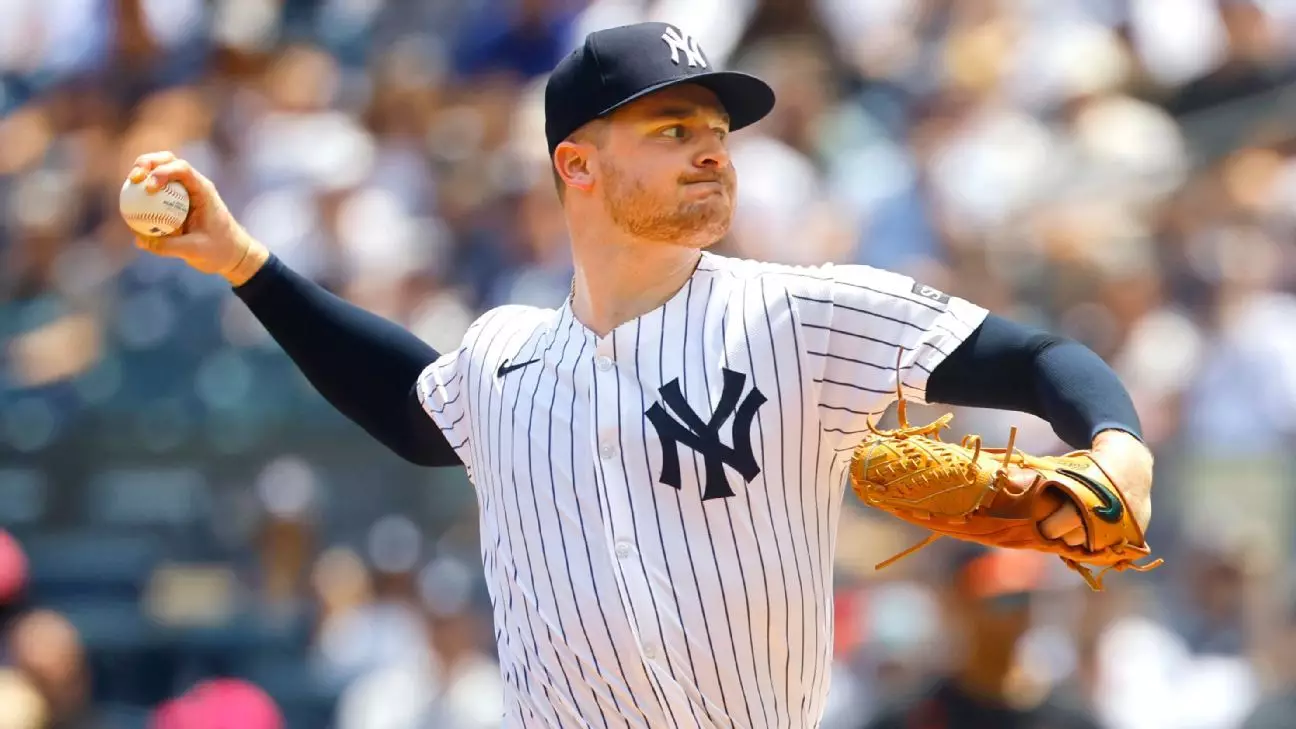The recent announcement that Clarke Schmidt will likely undergo Tommy John surgery serves as a stark reminder of how fragile a baseball rotation can be, especially for a team with lofty aspirations like the New York Yankees. This injury is not just a setback for one pitcher; it exposes the systemic vulnerabilities embedded deep within the team’s roster and management strategies. While injuries are an inherent part of the sport, the frequency and severity of these setbacks hint at a troubling pattern—an inability to adequately protect or develop young talent amidst the relentless grind of a punishing Major League schedule.
Schmidt’s injury, especially considering it’s his second Tommy John, raises critical questions about the Yankees’ approach to pitcher health and workload management. For years, superstar pitchers like Gerrit Cole have been lauded for their durability, yet behind the scenes, the team’s depth and recovery protocols remain questionable. Resistance to progressive injury prevention measures, combined with a reliance on veteran options, creates a roster overly dependent on a handful of trusted arms—arms that are increasingly vulnerable. The Yankees’ injury streak starkly illustrates a club ill-prepared to absorb shocks, illustrating how an insular focus on immediate wins can lead to long-term vulnerability.
The Illusion of Internal Solutions and Market Shortsightedness
The Yankees’ internal options for replacing Schmidt are an emblematic symptom of a misguided reliance on stopgap fixes. Veterans like Carlos Carrasco and Allan Winans fill the gap temporarily, but this approach neglects the fundamental need for sustainable development and strategic talent acquisition. Promoting prospects at the expense of long-term planning underscores a broader organizational issue: a tendency to chase quick fixes rather than build resilient pipelines. The promotion of Cam Schlittler, while promising, seems more like a momentary Band-Aid than a strategic investment.
Boone’s mention of scouting the market ahead of the July trade deadline indicates some awareness of this deficiency. However, the trade market is often an emotional scramble rather than a carefully planned asset assembly. When a team is crippled by injuries, external reinforcements are rushed in, usually at inflated prices, further hampering the organization’s ability to build a sustainable, competitive rotation. The Yankees’ approach, therefore, reveals a shortsightedness rooted in immediate competitiveness rather than long-term health. Better, more holistic staff development and injury prevention strategies could mitigate such crises, yet the current management seems ill-equipped or unwilling to prioritize this aspect.
The Broader Implications for the Franchise’s Philosophy
This injury epidemic also signals a deeper issue about the Yankees’ overall philosophy. The team’s focus on star power and instinct for blockbuster trades often overshadows crucial investments in player health, development infrastructure, and roster resilience. The reliance on a handful of aces—particularly after Gerrit Cole’s severe injury—exposes a dangerous overdependence that jeopardizes the entire season’s viability.
The Yankees are caught in a cycle of high expectations coupled with a reluctance to adopt more sustainable practices. While they have the resources to pursue marquee trades, they often neglect to assemble a foundation capable of weathering the inevitable storms of a grueling season. This strategy creates a false sense of invincibility, which is shattered each time an injury occurs, revealing the fragility beneath the glitz.
In a sport that is increasingly demanding on pitchers’ arms, neglecting comprehensive health and injury prevention becomes not just careless—it’s shortsighted. The Yankees’ recent injuries reflect a broader cultural issue: a fixation on immediate results at the expense of long-term stability. Until the franchise shifts its focus toward holistic development, injury setbacks like Schmidt’s will remain recurring nightmares, undermining their aspirations and tarnishing their legacy.
The future of the Yankees’ rotation, and perhaps their championship hopes, hinges on addressing these systemic flaws. Merely patching the cracks with external acquisitions or temporary fixes allows the bleeding to continue. The towering shadow cast by injuries like Clarke Schmidt’s is a grim reminder that durability and resilience are assets that must be earned through disciplined development, injury prevention, and a strategic overhaul of how the franchise values its players—not just for their momentary contributions but for their long-term health and potential.


Leave a Reply